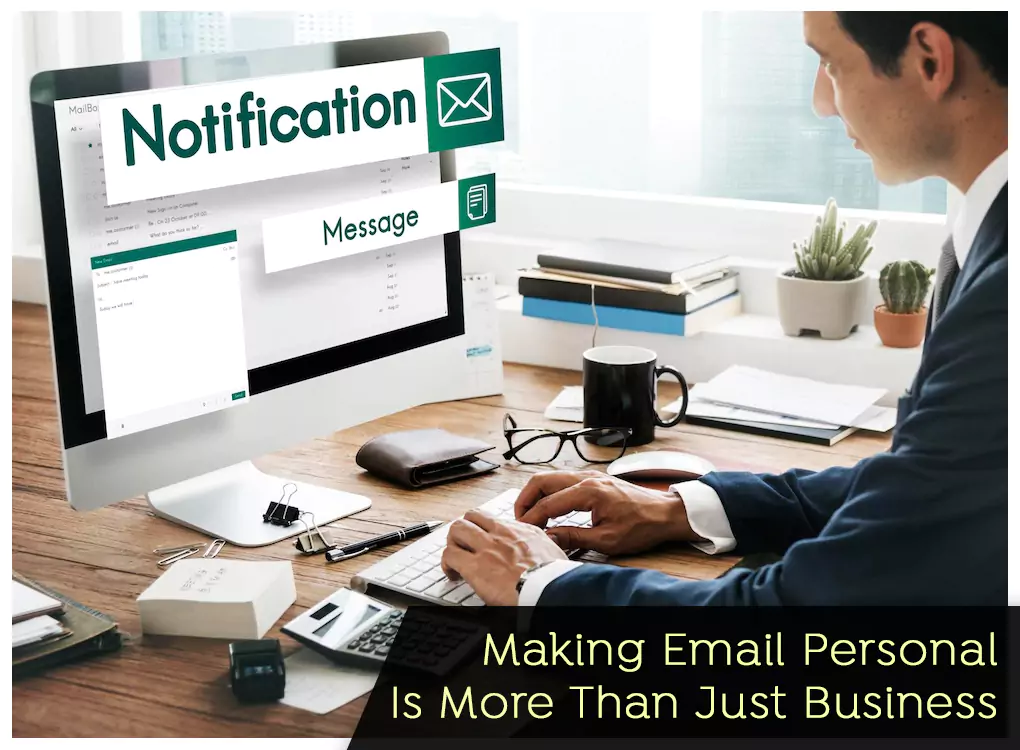Personalization isn’t a new concept in the world of digital marketing. For years, it’s been a catchphrase and a grandiose “end game” ambition. While brands have been dipping their toes in the water, the Covid19 pandemic has forced them to take the plunge. The world has changed, as have consumer behaviors, and businesses no longer have a choice.
Now that we’re visiting brick-and-mortar establishments less frequently – a trend that’s expected to continue – the consumer experience must migrate to the digital realm. Email is the most likely strategy to replace the face-to-face encounters that are so important in building a brand.
Email is one of a kind. It’s a common way for people to begin (and end) their day. Under the covers or with their morning coffee, I’ve never heard of anyone perusing some decent Google advertisements… but our specialized PPC staff might be! Companies use the inbox to communicate with their customers on their own time. If there was ever a nice digital marketing channel, it would be – email.
Brand happiness is typically derived from individualized services, such as the helpful techie at the Apple shop recommending the best equipment or the camping fanatic on the REI team assisting you in selecting the ideal tent. Positive one-on-one encounters can mean the difference between a one-time sale and a long-term customer. Customers who are loyal are likely to return. Furthermore, statistics reveal that recurring consumers spend 33 percent more than new customers.
In 2022, how will brands make it personal? According to research, people are relying largely on email. According to Forbes, nearly half of businesses aim to boost their email marketing budgets this year.
Use this E-mail as a tactic to:
1. Collect Feedback First.
Surveys, polls, and other forms of feedback provide essential information on what your customers want in terms of content, products, and services. They create a two-way dialogue with your audience, and businesses rank email as the most important customer feedback channel, ahead of the website, phone, online chat, and app.
Tip – Keep it short when designing avenues for feedback. An email survey with three well-thought-out questions and a 30% response rate is preferable to one with 15 questions and a 5% response rate. Your customer’s time, like yours, is valuable.
2. Build A Better Customer Experience.
Put the knowledge you’ve gathered about your target audience to good use! The days of snake oil merchants claiming that their product is “just what they require” are long gone. People anticipate a customer experience based on their purchase history and customer service touchpoints in our always-connected modern era.
Tip: Personalizing the consumer experience can be done through targeted email marketing, correct product suggestions, and dynamic web experiences. Begin by assessing your present skills with your IT staff or an experienced agency partner. Then devise a strategy to implement or improve it. It’s time to switch email platforms if your present one doesn’t allow for customization.
3. Increase Customer Retention.
In 2022, this is a major concern for businesses. Those who made it through the Covid19 pandemic want to keep their hard-won new and returning clients. During the epidemic, 75% of individuals tried a new brand or method of shopping, according to a McKinsey survey. Don’t let them get away from you! Make sure your consumers understand how much you care about them and how much you want to connect them with the products that are most suited to their needs.
Never undervalue the value of a little extra attention, such as sneak looks at new products, early access to deals, or a simple “thank you.” According to studies, email campaigns that include the word “thank you” in the subject line had some of the greatest open rates.
If you’re looking for a partner to help your business fully utilize email this year, let’s talk. Hats off to email marketing and manners as the digital world continues its rapid evolution…
4. Asking Right Questions
Asking your audience questions is one of the most reliable methods for segmentation and personalization. By inquiring about why they visit your site, become users, or subscribe to emails, you can gain revealing data that will allow your business to send more accurate and targeted emails. This process is not only easy but also essential for understanding your customer base.
5. Email Personalization shortens the Sales Cycle
Email personalization can help you shorten the sales cycle by allowing you to take advantage of the data you have on your customers. By personalizing emails sent to customers, you can make sure that you offer them relevant products and services, and avoid annoying them with irrelevant offers. Additionally, personalization can help you improve your lead nurturing efforts by providing leads with content that will help them solve their pain points and achieve their goals.


